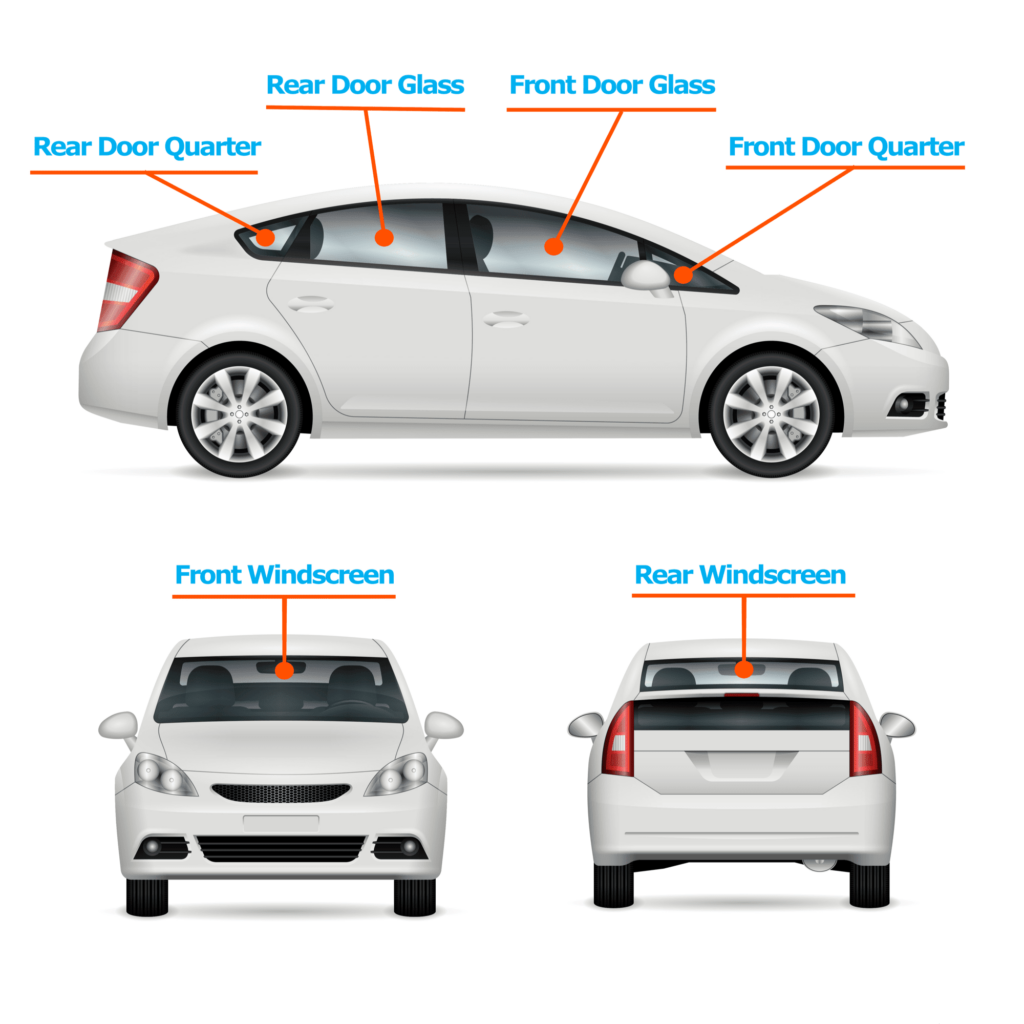When it comes to replacing your windscreen, it’s fairly simple. But what about that tiny glass panel that’s attached to your rear door window?
These days, you can expect to find more than just 6 windows on your vehicle, with a number of smaller panels usually found in corners.
To help specify which window you’ll need repairing or replacing, here are the names of each individual window.

| Front: – Front Door Glass – Front Windscreen – Front Door Quarter | Rear: – Rear Door Glass – Rear Door Quarter – Cargo Window – Rear Windscreen |
What is Auto Glass?
Short for automotive glass, auto glass refers to laminated and tempered glass, the two types of safety glass used to manufacture windscreens and car windows. The safety glass is designed to protect the car and keep its occupants safe.
Laminated glass creates windscreens while tempered glass creates the side and back windows.
What is auto glass made of?
Laminated glass is made by fusing a thin layer of polyvinyl butyral (PVB) with two solid glass layers. The three layers are subjected to extreme heat and pressure to form a strong, rigid glass product.
Tempered glass is made by heating glass and then rapidly cooling it to room temperature to increase its tensile and compressive strength. Tempered glass is 5 to 10 times stronger than ordinary glass.
What types of glass are used for car windows?
Tempered glass is the only type of auto glass used for car windows. It’s also used on the back windows and sunroofs. Unlike ordinary glass, tempered glass shatters into small dull pieces when it breaks.
The high tensile and compressive strength of tempered glass ensures that car windows don’t break when you drive over a pothole, get into a fender bender, or bang the car doors.
What Is the Difference Between the Windscreen Glass and the Glass Used for Windows?
Unlike standard glass, windscreens comprise a layer of PVB fused with two solid glass layers under high temperature, making them infinitely stronger.
Due to the unique manufacturing process, windscreens are strong and rigid enough to keep you safe during a car accident. They keep the roof from buckling and crashing the passengers when car overturns.
Windscreens are capable of resisting penetration by flying projectile during an accident. That’s why people don’t fly through the windshield despite not wearing a safety belt during a head-on collision.
When a windscreen break or is punctured, it stays intact instead of shattering, as is the case with ordinary glass because it’s bonded with PVB.
Windscreens deflect up to 95% of the harmful UV rays emitted by the sun to keep drivers safe.
A windscreen allows for the safe deployment of the passenger airbag. This airbag bounces off the windshield at incredible speed and force before heading towards the passenger.
